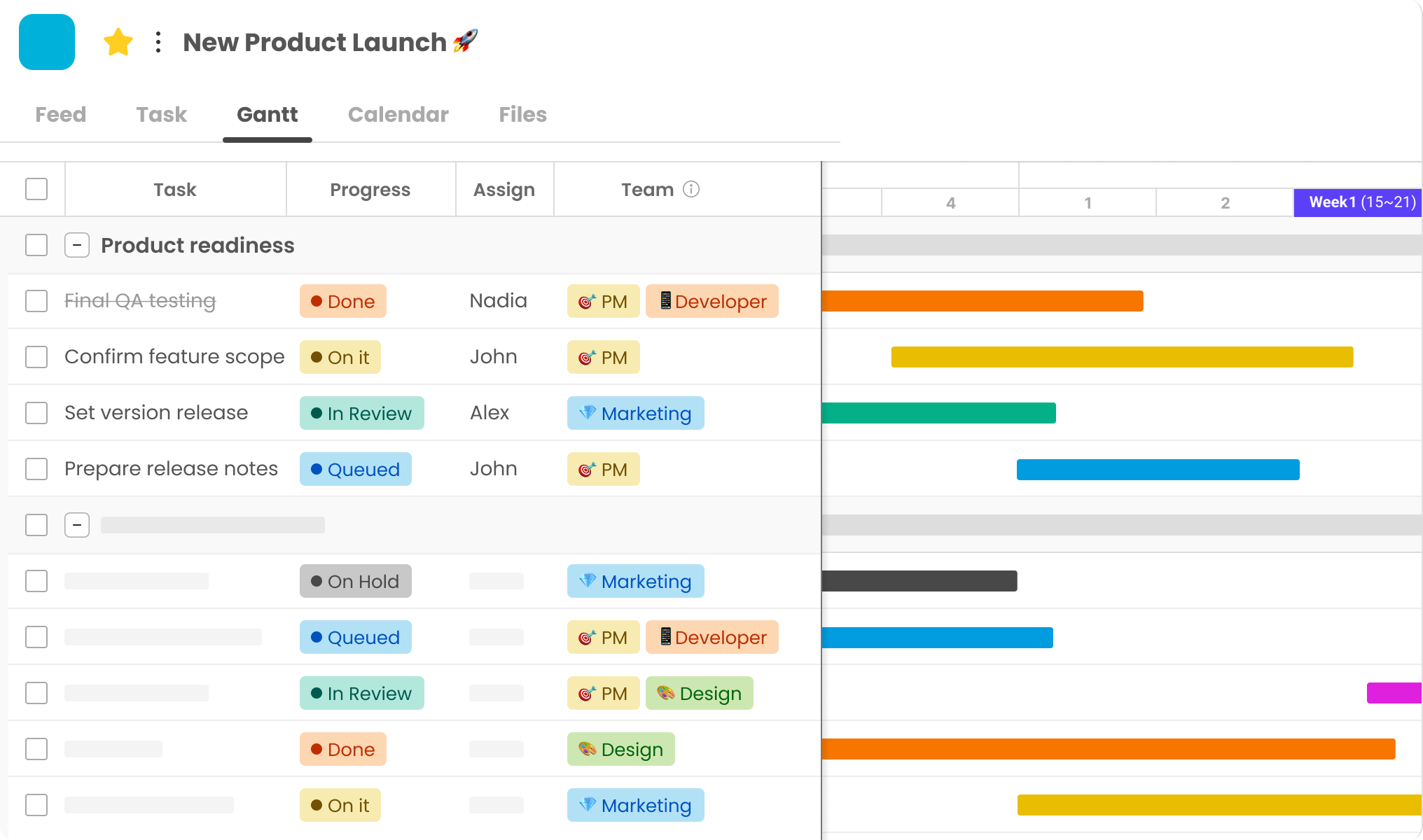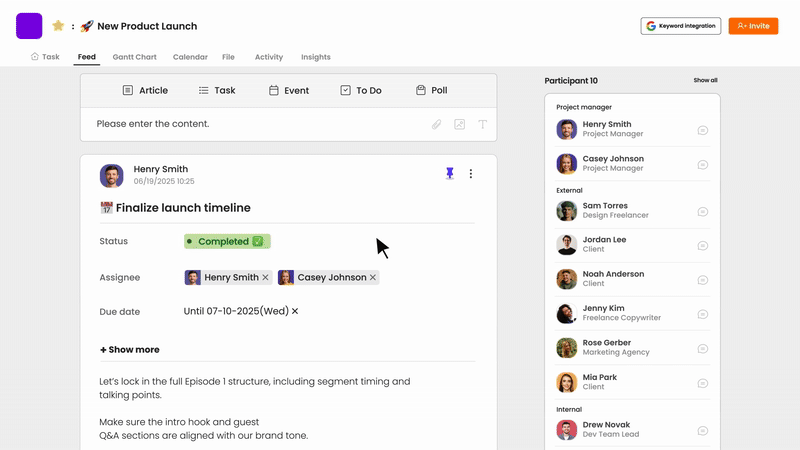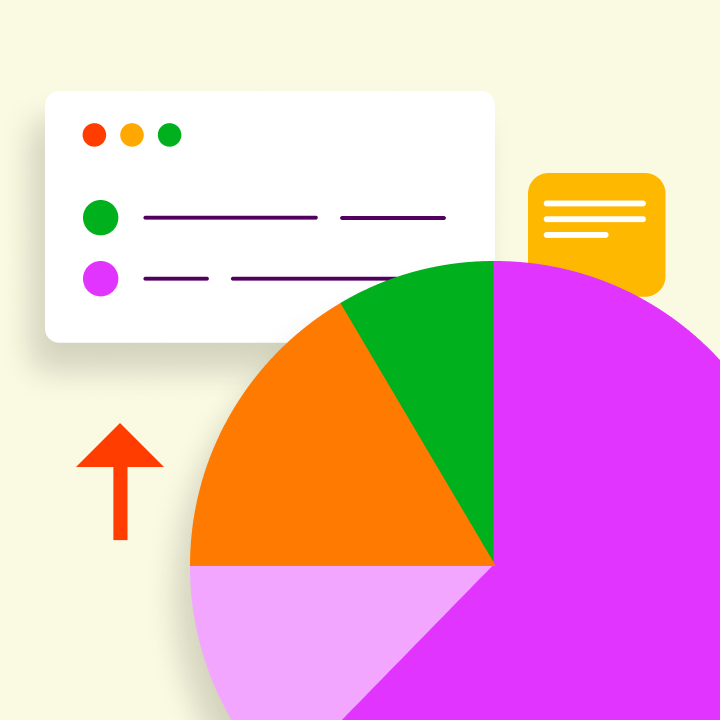Are you also running a business for a long time and not really moving forward? Do you also think it’s due to poor strategic planning? You are probably right. It’s essential for any team or company that wants to grow with intention, not just momentum.
To help you overcome this problem, we have created this comprehensive guide. Here, we will cover everything from timeless strategic planning frameworks to modern digital tools so your team can align, execute, and stay competitive in this fast-paced world.
Reading these practical and actionable instructions will help you plan smarter and overcome new challenges easily. Let’s quickly begin by understanding strategic planning.
What Is Strategic Planning?
Before jumping into strategic planning tools and approaches, let’s first understand what it is. Although everyone is throwing this term around in team rooms and executive suites, many still mix it up with mere goal-setting and project management, but it’s different. Let’s understand it with its definition and purpose.
Definition and Purpose
At its essence, strategic planning is about defining a clear direction for your company. It is a systematic process that indicates where you want to go, how you will get there, and how you will know you’ve arrived. Whether you want to grow geographically into new markets, introduce products, or transform internal processes, an effectively executed plan makes goals achievable.
The main goal of strategic planning is to build alignment. It bridges your mission and vision to real-world action. An effective plan also anticipates risks, sees opportunities ahead, manages resources well, and stays on target from department to department.
In contrast to everyday activities, strategy planning is over a longer period, generally 3 to 5 years. Here, leadership, management, and even frontline staff must be consulted to be able to reflect both aspiration and reality.
Most significantly, strategic planning enables organizations to be proactive rather than reactive. Rather than reacting to challenges, you’re ready for them with a sound strategy, timeline implications, and set measurements.
Frameworks vs. Models: What’s the Difference?
Individuals tend to confuse the strategic planning framework and models, but they have distinct functions.
A strategic planning model gives you the structure of the entire planning process—think of it as the blueprint. For example, Basic or Scenario Planning models guide you through defining your mission, goals, and action plans in a structured way.
You can apply more than one framework to a single model. For instance, an enterprise might use the Alignment Model and incorporate scorecards such as the Balanced Scorecard and VRIO to hone its focus.
Knowing the difference enables you to develop a flexible and tailor-made plan that accommodates your organization’s specific objectives.
Essential Strategic Planning Frameworks
Having an understanding of the correct strategic planning frameworks is going to help take your ideas from concept to reality. These aren’t generic—they’re flexible tools designed to clarify direction, align organizations and teams, and drive better decisions. Various tools will have different applications based on your organization’s goals, challenges, and growth stage. They’ll either concentrate on internal strengths, external threats, or both.
Let’s look at some of the most effective strategic planning methods used by teams globally to determine their top priorities and create a more resilient and actionable plan.
Balanced Scorecard (BSC)
The Balanced Scorecard is best suited for organizations interested in a balanced view of performance and not solely financials. Developed by Kaplan and Norton, it is designed to align day-to-day activity with strategy over the long term by concentrating on four key perspectives:
- Customer satisfaction
- Internal processes
- Learning and growth
- Financial performance
In BSC, you don’t only measure results—you know why you’re achieving them. The system commonly consists of a strategy map, a visual chart correlating departmental goals and demonstrating how attaining one goal will affect another.
Organizations use BSC to monitor KPIs, align strategic initiatives, and ensure departmental cohesiveness. It is an influential tool for staying focused as the business expands and objectives change.
OKRs (Objectives and Key Results)
OKRs are especially effective in fast-moving or high-growth environments. They divide goals into clear objectives and measurable key results. For example:
Objective: Improve customer retention
Key Results:
- Grow repeat purchase frequency by 20%
- Lower churn by 15%
This strategic planning framework is about focus and transparency. OKRs allow every team member to see how their efforts support the mission of the company. That visibility boosts motivation and accountability across the board. As might be expected, OKRs therefore feature prominently among startups, tech companies, and agile teams who want high performance.
PEST/PESTLE Analysis
If your strategic goals involve market entry, expansion, or regulation, PEST or PESTLE analysis is essential. This framework analyzes macro-environmental factors that could impact your plan:
- Political (regulations, trade policies)
- Economic (inflation, interest rates)
- Social (demographics, trends)
- Technological (innovations)
The extended version adds:
- Legal (compliance, labor laws)
- Environmental (climate, sustainability)
Businesses use PESTLE to anticipate disruptions and adapt their plans to external realities. Building a complete risk profile, paired with scenario planning or a SWOT analysis, is beneficial.
VRIO Framework
The VRIO framework is inwardly directed and allows you to determine whether your organization’s assets provide a sustainable competitive advantage.
- Is the resource Valuable?
- Is it Rare?
- Is it Inimitable (hard to copy)?
- Is your team organized to use it?
If your answer is yes to all these questions, you’ve got a sustained competitive advantage. The framework is helpful in strategic positioning and internal auditing and pushes leaders towards more intelligent resource deployment and differentiation.
Gap Analysis
A gap analysis compares your current state to your desired future and identifies what’s missing. This framework is efficient and results-driven. It allows teams to:
- Clarify strategic objectives
- Uncover performance gaps
- Design clear action steps to close them.
Often used with OKRs or a Balanced Scorecard, Gap Analysis is a reliable strategic planning method for improving internal performance and identifying where resources or processes are failing.
Strategy Maps
Although often paired with BSC, strategy maps deserve their mention. These visual tools simplify communication by showing how various objectives link together.
Strategy maps translate conceptual plans into real direction by charting how financial objectives, customer requirements, internal processes, and learning initiatives interact.
They’re invaluable for presentations or leadership team meetings when alignment and buy-in must be achieved.
Hoshin Kanri
Known as “policy deployment,” Hoshin Kanri is a structured, top-down planning method that ensures strategic goals set by leadership cascade effectively across the entire organization. It emphasizes:
- Long-term vision
- Team-level alignment
- Continuous feedback loops
Regular check-ins are built into the process so everyone from executives to frontline staff is kept on target toward common objectives. It is a formal but flexible method for galvanizing a company behind a shared vision with measurable results at all levels.
Strategic Planning Models to Know
While strategic planning frameworks help you dig into specific issues or define goals, strategic planning models give you the structure and sequence for creating an entire plan. The following are the five tried and tested key models to help you build roadmaps to drive change.
Basic Model
The Basic Model assists in defining mission, vision, goals, and action. It’s ideal for small teams or organizations needing a simple and straightforward framework. It is perfect for beginners. It walks you through:
- Setting your mission
- Identifying goals
- Building action plans
- Monitoring and adjusting over time
If your organization is new to planning, this model provides structure without complexity. It provides a good start before tackling complex strategic planning methods.
Issue-Based Model
The Issue-Based Model is slightly more advanced. Instead of starting with goals, it begins with challenges. You identify pressing issues and build a strategy to solve them.
Steps typically include:
- Conducting a SWOT analysis
- Prioritizing issues
- Crafting action plans
- Allocating resources and reviewing progress
It’s especially useful for nonprofits or growing companies facing clear obstacles.
Scenario Planning Model
This model prepares you for uncertainty. With the Scenario Planning Model, you explore multiple possible futures—best case, worst case, and most likely.
You then develop a strategy that works across these scenarios. This strategy is excellent for regulated industries, global markets, or emerging technology sectors that experience constant change.
Teams often use this model alongside frameworks like PESTLE to map external variables.
Alignment Model
The scenario planning model is a game-changer if you do business in a volatile or rapidly changing context. It enables you to plan for future events such as economic change, regulatory change, or technological disruption.
The plan is to sketch out three to five hypothetical futures (best case, worst case, and most likely are typical selections), and create a flexible strategy that puts your team in a position to respond effectively regardless of what happens.
This model is especially effective when combined with strategic planning frameworks such as PEST or PESTLE, which evaluate political, economic, social, and technological risks that could influence your business.
Real-Time Planning Model
For organizations that must act rapidly, a Real-Time Planning Model gives them flexibility many conventional models lack. It is intended for sectors such as technology, media, or rescue services, in which conditions vary regularly.
This model shortens the strategic planning cycle and emphasizes continuous updates and rapid feedback. You still set mission, goals, and tactics, but repeatedly revisit them based on additional data or changes outside your organization.
Instead of being locked into a fixed multi-year plan, real-time planning relies upon flexibility. It is particularly effective using an analytics dashboard or collaboration tool that allows you to monitor metrics and act on them spontaneously.
Tools That Support Strategic Planning
Modern strategic planning tools do more than hold documents; they enable collaboration, monitor performance, and allow you to visualize objectives. Whether you have a small team or an international operation, an appropriate digital tool can transform your planning process as a whole.
Morningmate

Morningmate is an adaptive all-in-one platform built to help you with every phase of your strategy, right from brainstorming to execution. Why Morningmate? Because it is the most balanced among all strategic planning tools.

During the early planning stages, you can examine needs and expectations by structuring your plan into adjustable workspaces. Each plan is specifically for a given project, team, or department. Once it starts, Morningmate lets you see team progress in real-time through visual Gantt charts, and task status indicators. You can ask questions or leave comments directly on posts, keeping feedback and context in one place.
What’s more, Morningmate offers:
- Public or anonymous team polls to collect input.
- Seamless integration with Google Workspace.
- A centralized, searchable file index to locate key documents fast.
- External collaboration via a simple shareable link.
Mural
Mural is built for collaboration and ideation. Whether you have brainstorming sessions with your team or creating structures such as SWOT, PESTLE, and Gap Analysis, Mural allows you to use interactive boards and templates and see ideas materialize with ease.
It is instrumental in remote or hybrid contexts as it enables simultaneous contributions by multiple people. Tools like anonymous voting and sticky notes encourage honest input and consensus-building.
ClickUp
ClickUp is more than a task management tool—it drives teams from goals to action. With goal tracking, visual timelines, and automation capabilities, ClickUp enables multiple strategic planning frameworks, including OKRs, strategy maps, and the Alignment Model.
ClickUp also features dashboards for broad overviews and integrations with applications such as Slack and Google Workspace, and is therefore an excellent solution for cross-functional team collaboration.
Trello
For simplicity-loving teams, Trello offers a card-and-board organization that automatically configures strategic planning. You can use different boards for individual projects, strategic goals, or specific frameworks.
While Trello doesn’t natively offer complex reporting, its integrations and “Power-Ups” expand functionality, ideal for small teams focused on visibility and organization.
Airtable
Airtable blends spreadsheets and databases to give teams complete control over strategic information. You can set up OKR dashboards, strategy templates, or track key results using pre-built templates or customized views.
Its flexibility supports any strategic planning method, especially for teams that want to segment data, manage multiple inputs, or sync information across departments.
Choosing Tools Based on Team Size and Use Case
One thing you need to understand before selecting the strategic planning tool is that it isn’t about features; it is about your needs. The best tool is the one that matches your needs. The following are the recommended tools for different-sized teams:
- Small teams: Trello or Airtable offer simplicity and fast setup.
- Medium-sized teams: ClickUp or Mural help with structure and collaboration.
- Large or cross-functional teams: Morningmate stands out with centralized planning, communication, and file sharing in one platform.
Choosing the right tool helps you move from just writing plans to making them happen.
How to Select the Right Planning Framework?
Not all strategic planning frameworks suit all organizations. Selecting the right one—or combination—is more about finding one that matches your goals, company culture, team structure, and existing challenges than about being trendy.
A conscientious selection process ensures that your team is not merely completing forms but developing a plan that produces tangible results.
Aligning with Business Objectives
Before choosing a framework, establish what success is for your business. Are you entering a new marketplace, expanding operations, enhancing customer satisfaction, or refining internal processes? Your goals determine your framework.
For instance:
- OKRs or the Balanced Scorecard are ideal choices if you need performance clarity and measurable goals.
- Facing market or regulatory uncertainty? Scenario Planning or PESTLE gives you the flexibility to prepare for different futures.
- If the problem lies within the organization—inefficient workflows or unclear responsibilities—the Alignment Model or VRIO framework can help bring structure and insight.
The size of your organization is also a factor. Small organizations can use compact, action-oriented tools like OKRs, but big organizations require more elaborate approaches, such as a Balanced Scorecard or Hoshin Kanri.
And don’t forget that your team’s comfort level with data, analytics, and documentation might determine what tool makes most sense. A too complex framework for your team to adopt will not move the needle—it will stall progress.
Framework Combinations That Work
Often, a single framework isn’t enough. Many organizations combine multiple strategic planning methods to cover more ground and drive a more profound impact.
Here is one such approach:
- Start with a SWOT analysis to assess your internal strengths and weaknesses, and external threats and opportunities.
- Then, run a Gap Analysis to determine where performance is falling short.
- From there, set measurable outcomes using OKRs or organize initiatives with the Balanced Scorecard.
This layered strategic planning method allows you to diagnose, plan, and execute while constantly adjusting based on data. Think of it like building a house: Frameworks are your tools, and using the right mix ensures that every part of the strategy is strong.
When to Switch Methods?
Even the most effective strategy can outlive its usefulness. Your strategic planning tools and frameworks should evolve with your business.
Here are signs it’s time to pivot:
- There’s a disconnect between strategy and execution.
- Team members are unclear about how their work ties to company goals.
- You’re falling short of outcomes, even when following your current method.
- Your environment is changing rapidly—economically, technologically, or competitively—and your plan isn’t keeping up.
A startup may begin with a Basic Model for simplicity, but shift to the Real-Time Planning Model as it scales and needs to stay agile. A growing company might integrate OKRs within a Balanced Scorecard structure to empower teams while maintaining organizational focus.
The goal isn’t to stick to one strategic planning method forever—it’s to choose what works now. The best framework is the one that fits your current reality and helps you move forward with clarity.
Real-World Templates & Planning Resources
A great strategy isn’t just about big ideas but execution. And that execution becomes much easier when you have the right tools. The following templates and resources can help you turn your strategic planning frameworks into real-world outcomes.
Free Strategic Planning Toolkit
A well-organized toolkit can save hours of guesswork if you’re just getting started. The best ones don’t just give you worksheets—they guide you through the process from beginning to end. Look for a toolkit that includes:
- Mission and vision templates
- SWOT, PESTLE, and Gap Analysis worksheets
- Sample OKR and Balanced Scorecard templates
- Roadmaps, timelines, and editable Gantt charts
These assets help structure your thinking and turn scattered ideas into actionable steps. Many of these templates are customizable, allowing you to tweak them based on your industry, team size, and objectives. With the right toolkit, even first-time planners can build a robust, measurable, and repeatable strategy.
Some even provide walkthroughs or sample data so that you can see how each strategic planning tool is used successfully. When paired with collaboration software, these templates become living documents that evolve with your organization.
Sample Plans by Industry
One of the best ways to improve your planning is to study others who’ve done it successfully. Industry-specific sample plans give you practical insight into how organizations structure their strategy.
- Healthcare: Often focuses on regulatory compliance, patient outcomes, and operational efficiency
- Tech startups: Rely on OKRs, Scenario Planning, and lean strategies to stay agile
- Nonprofits: Frequently use the Issue-Based Model alongside the Balanced Scorecard to ensure social impact aligns with mission objectives
Reviewing these samples can help you identify benchmarks, avoid common pitfalls, and tailor your plan to your organization’s unique demands. Even the layout and phrasing in these examples can serve as helpful guidance.
Visual Roadmaps & Scorecards
Never underestimate the power of visuals. Tools like strategy maps, OKR dashboards, and scorecard templates turn data and goals into something your team can see and rally behind.
Look for templates that allow you to:
- Map out goals by quarter or milestone
- Assign ownership and deadlines to each task.
- Track both leading and lagging indicators for more intelligent decision-making.
Even basic visualizations make strategy easier to communicate and execute.
Ready to Put Your Strategic Plan into Action? Try Morningmate
As you know, strategic planning frameworks only succeed when paired with the right tools. That’s where Morningmate comes in. It doesn’t just help you build a strategy—it keeps your team engaged, informed, and moving toward real results.
Morningmate supports every step of your planning cycle, giving your team the necessary structure without interfering with their natural workflow.
Why do teams choose Morningmate?
- Create project workspaces for teams, departments, or initiatives.
- Assign tasks and subtasks with clear priorities and deadlines.
- Comment on posts to keep questions and updates in one place.
- Use Gantt charts and visual progress icons to monitor tasks in real time.
- Share a single link to bring in external collaborators easily.
- Collect feedback with quick polls—public or anonymous.
- Access centralized documents and past strategies in seconds.
Morningmate isn’t just another strategic planning tool—it’s the innovative, collaborative strategy operating system.Ready to streamline your planning and move from confusion to clarity? Sign up for free today and put your strategy in motion—without the chaos.




